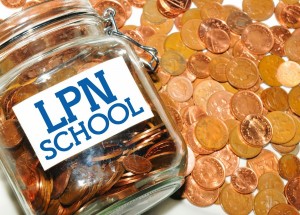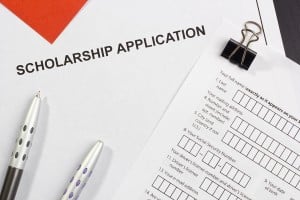Cost of LPN Programs & Schools

LPN Program Tuition
The most substantial portion of your LPN program expenditure is the tuition, and this cost can exhibit significant variations depending on the state and locality of the program. The term “tuition” primarily refers to the expense associated with classroom education provided by the program, typically excluding supplementary essential costs such as books or clinical fees. On a national scale, the average tuition for LPN programs falls within the broad range of $10,000 to $15,000. Nevertheless, the spectrum of program costs is vast, commencing at $4,000 or $5,000 for specific programs and escalating to exceed $30,000 for others. Although the initial financial commitment may seem daunting, it is reassuring to know that financial aid options are accessible. Delve into our comprehensive guide on funding your LPN education to garner insights into the costs and potential avenues of support. If you are keen to understand the expenses associated with LPN school, continue reading…
Monetary Expenditures of LPN School and Strategies for Savings
Navigating the financial intricacies of nursing school can be complex and overwhelming, exacerbated by the elusive definition of “tuition.” As previously mentioned, tuition often encompasses only the cost of classroom education. While certain LPN programs amalgamate all expenses into a single figure, encompassing tuition, books, fees, etc., this is not the standard practice for most practical nursing programs. In addition to tuition, students are frequently held accountable for various fees and additional costs. Here is an overview of the common expenses associated with LPN school, apart from tuition.

Struggling to meet your deadline?
Get your assignment on Cost of LPN Programs & Schools done by certified MDs and PhDs in the USA. ORDER NOW!
- Books – Imperative for any educational program, LPN programs are no exception. Depending on the program’s requirements and course load, books can range from several hundred dollars to over $1000. To economize, contemplate alternative options for purchasing textbooks, such as Amazon, eBay, or chegg.com, which offers textbook rentals and electronic downloads. Ensure that the ISBN matches and acquire the correct edition when exploring options for textbooks.
- Stethoscope – A pivotal tool for LPN students and licensed nurses, stethoscopes play a crucial role in accurate patient assessment. Stethoscopes come with a varied price range, starting from as low as $20 to several hundred dollars. Opting for a quality stethoscope is advisable, as cheaper alternatives may compromise proper patient assessment, particularly for beginners. Trusted brands like Littmann® Stethoscopes provide reliable options, with prices ranging from approximately $75 for good ones to $150+ for excellent ones. Consider using a Stethosnap for a secure attachment to your uniform.
- Uniform and Nursing Supplies – Uniforms generally consist of scrub pants and tops, with costs ranging from $20 to several hundred dollars. Some programs may mandate a specific number of uniforms to be purchased. Additionally, nursing supplies like pen-lights, bandage scissors, and other items may be required, typically costing around $10 each.
- NCLEX-PN Testing – Graduates of LPN programs must undertake the NCLEX exam to obtain licensure, incurring a cost of approximately $200. Adequate preparation for the exam is crucial, and review books or courses may be purchased at varying costs. Repeat examinations also involve a fee of around $200 each.
- Fees – The most elusive and wide-reaching category, “fees,” can vary from negligible to thousands of dollars. Common fees include clinical fees, technology fees, parking fees, cafeteria fees, etc. It is imperative to meticulously review the fees and financial information provided by your chosen school.
The Fastest Pediatric Nurse Practitioner (PNP) Programs in 2024
Lost Wages During LPN School
While not a direct cost of LPN schooling, the consequence is a reduction in income. Many aspiring LPNs retain jobs that they cannot afford to relinquish during school. Striking a balance between work and full-time LPN programs can be challenging, resulting in a decrease in income. It is essential to budget and prepare for the financial impact of LPN school, finding equilibrium between work and dedicating sufficient time to education.
Personal (Non-Monetary) Costs of LPN School
Beyond financial expenses, LPN school encompasses other costs that require preparation and proper management. The demands of school, both mentally and physically, can be draining, depleting one’s energy reserves. Factors like lack of sleep and reduced time with friends and family due to studying or long clinical hours can contribute to stress. Prioritizing self-care during nursing school is paramount, and maximizing the time spent with support systems is advisable.
Ways to Cover LPN School Costs
LPN programs can be financially demanding, ranging from $5000 to $25,000 or more, prompting students to explore ways to cover these expenses. Various methods, each with its advantages and disadvantages, are employed to finance LPN education. Frequently, a combination of methods is utilized to meet the overall cost.
Cash
Cash provides a straightforward and expeditious method to pay for LPN school, devoid of incurring interest or future repayment obligations. However, for many students, this may not be a feasible option, as small remaining amounts after student aid applications often necessitate out-of-pocket payments.
Grants
Grants, often considered “free money,” represent a form of financial aid that typically does not require repayment. They can emanate from federal or state governments, companies, organizations, colleges, or individuals. Grants are generally need-based and awarded based on financial need. To determine eligibility for federal student aid, including grants, loans, and more, visit https://fafsa.ed.gov/. Adhering to application deadlines and fulfilling specific requirements for grants is crucial, as some may necessitate repayment if the student withdraws early.
One well-known grant is the Federal Pell Grant, a need-based grant with amounts based on financial need, cost of education, enrollment status, and intended duration of attendance. For the 2013-2014 school year, the maximum Pell Grant is $5645, increasing to $5730 for the 2014-2015 school year. Typically, schools apply grant funds directly to costs and disburse any remaining amount to the student.
Loans
Loans involve borrowing a sum of money that must be repaid along with interest. Federal student loans and private student loans are the two main types available to students. Federal student loans, often subsidized by the federal government, are generally preferable due to lower fixed interest rates. These loans do not require payments while in school, and some may even be subsidized, covering interest payments while enrolled at least half-time. Limits exist on the amount of federal student loans, increasing each academic year and higher for independent students.
For more information on federal student loans, visit the official website. If student loans and other forms of financial aid fall short, additional loans, often borrowable by parents or with a cosigner, can be considered.
Work-Study Program
The Federal Work-Study program provides students with part-time jobs while enrolled in school, offering a means to earn money to cover educational expenses. These jobs may be on or off campus, with earnings paid directly to the student. It is essential to note that not all schools participate in this program, necessitating a thorough check for availability.
Scholarships for LPN Programs
Scholarships share similarities with grants in that they do not require repayment, but they typically rely on merit rather than financial need. They serve as a viable option for covering a portion or the entirety of LPN school costs. Scholarships are not obligations for students to repay and are accessible from diverse sources, including individuals, groups, private or nonprofit organizations, religious groups, churches, companies, and more.
When exploring and applying for scholarships online, it is essential to exercise caution and prudence. Unfortunately, there are instances of fake scholarships used to scam unsuspecting individuals. It is crucial to rely on reputable sources and search engines when researching potential scholarships. If a scholarship appears too good to be true, it may be a red flag. Additionally, extreme caution is advised when encountering scholarships that request payment, credit card information, or social security numbers, as these are often indicators of fraudulent schemes.
The majority of scholarships are directly offered by the LPN program to which you are applying. These scholarships usually have a specified number awarded each year, and the selection process involves identifying standout applications. To qualify for these scholarships, applicants need to complete an application and submit a written essay. The essay should articulate why the applicant qualifies for or needs the award. If the scholarship is specific to nursing, the essay should express the applicant’s motivation to become an LPN. Given the limited number of scholarships available for the school year, programs typically select essays that stand out the most. When completing the application, it is advisable to take the time to ensure both the application and essay are grammatically correct. Checking for errors or misspellings before submission is crucial, and having another person review the paperwork can help identify any overlooked mistakes. Additionally, paying attention to deadlines is essential, as most scholarships have fixed deadlines and do not accept late applications.
Explore our Veterans Guide to LPN Training & Financial Aid > Military Scholarships.
National LPN/LVN Scholarships
- National Black Nurses Association Scholarship Program
- Foundation of the National Student Nurses’ Association
- Cherokee Presents: A Nurse I Am Scholarship
FAFSA Essentials for LPNs
FAFSA, or the Free Application for Federal Student Aid, serves as the largest single source of financial aid for students. Given the potentially high costs of LPN school, student aid is often invaluable. The FAFSA form is free to complete and submit, providing students with insights into the types and amounts of available student aid. FAFSA unlocks federal grants, loans, and work-study programs. Additionally, state and local agencies may use FAFSA data to determine eligibility for other forms of student aid. FAFSA is valid for one school year, necessitating the completion of a new application each year for those seeking federal student aid. This aspect is crucial when planning the financial aspects of LPN school. There are three options for filing a FAFSA:
1. Online at https://fafsa.ed.gov/index.htm
2. Download and complete a PDF FAFSA, which is then mailed for processing
3. Request a paper FAFSA
Filing a FAFSA online is typically the fastest and easiest method to obtain student aid for LPN school. Online submissions are processed within 3 to 5 days, while paper applications take 7 to 10 days for processing. It is imperative to submit the FAFSA on time. If you require information about deadlines, refer to the [Link to] [deadline section] in our guide.
Requirements for Federal Student Aid
Certain basic requirements must be met before completing a FAFSA for federal student aid eligibility. The eligibility criteria include:
1. Being a citizen of the United States or an eligible noncitizen
2. Possessing a valid social security number (SSN), with some exemptions for students in Palau, Micronesia, and the Marshall Islands
3. Holding a high school diploma or General Education Development (GED) certificate
4. Enrolling in an eligible program
5. Maintaining satisfactory academic progress
6. Not being in default with current student loans
7. Having a record free of drug-related offenses
Specific grants and loans may have additional requirements, such as demonstrating financial need. The grade level and degree being pursued also impact the types and amounts of available student aid. If there are uncertainties, contacting the financial aid office at the school is recommended.
How to Prepare for and Complete a FAFSA for LPN School
The time it takes to complete a FAFSA for LPN school depends on factors such as the student’s situation and whether it is an initial application or renewal. On average, the process takes close to 1 hour. Taking the time to ensure accuracy is crucial, and gathering the required information beforehand can significantly expedite the process. Necessary information includes:
1. Social Security Number (or Alien Registration Number if not a U.S. citizen)
2. Most recent federal income tax return, W-2, and records of other income earned. FAFSA is linked with the IRS data retrieval tool, which many students can use to automatically transfer information from the previous year’s taxes into the FAFSA form.
3. Bank statements and records of investments (often not needed or applicable)
4. Records of untaxed income (if applicable)
5. Electronic personal identification number (PIN), serving as a secret number for identification and electronic signing of the FAFSA. The federal student aid PIN remains the same year to year.
6. If considered a dependent student: all the above information will be required for your parent(s) as well. Exceptions apply to students over 23, married students, military or veteran students, and Master’s degree or Ph.D. students, as most others are considered dependent. For complete information, visit the official government FAFSA website.
Completing the actual FAFSA is straightforward. Input the information as prompted, and the form will request details listed above, along with other necessary information. While completing the FAFSA, you will indicate the educational institutions to which you want FAFSA data submitted. It is advisable to list more than one LPN school if uncertain about attendance.
What to Expect After Completing a FAFSA
Once the FAFSA form is completed, it undergoes processing, taking 3 to 5 days for electronically submitted FAFSAs and 7 to 10 days for paper submissions. Upon processing completion, an email notification is sent, allowing you to view your Student Aid Report (SAR). The SAR summarizes information entered into the FAFSA and should be carefully reviewed for accuracy. The Expected Family Contribution (EFC) is included in the SAR, serving as a number used in determining student aid eligibility and amounts. It is crucial to note that the EFC is not an estimate for out-of-pocket costs or parental contributions. If corrections or additions are necessary, they should be addressed promptly.
After completing the FAFSA, the information is forwarded to the colleges and universities listed in the application. Each institution is responsible for creating and disbursing financial aid packages. Some schools may require additional information, making it essential to check for any specific requirements. Typically, financial aid packages are sent to students around the same time as admission paperwork, although this can vary among schools.
Student Aid Deadlines
A crucial aspect to remember when planning to receive federal student aid is adhering to deadlines. The federal deadline for the 2014-2015 school year is June 30, 2015, with corrections possible through September 19, 2015.
In addition to federal deadlines, many states have additional deadlines for student aid. State deadlines often precede federal deadlines, some by more than a year. The government FAFSA website and your college’s financial aid department can provide information about state deadlines and other requirements.
State and federal deadlines are accompanied by college-specific deadlines, which do not apply to all schools. However, it is essential to be aware of them. Your college’s website or financial aid department can offer more details about deadlines.
The most efficient way to manage all deadlines is to submit your FAFSA as early as possible. Typically, once the previous year’s tax return is completed, the FAFSA can be submitted.

Dont wait until the last minute.
Provide your requirements and let our native nursing writers deliver your assignments ASAP.


